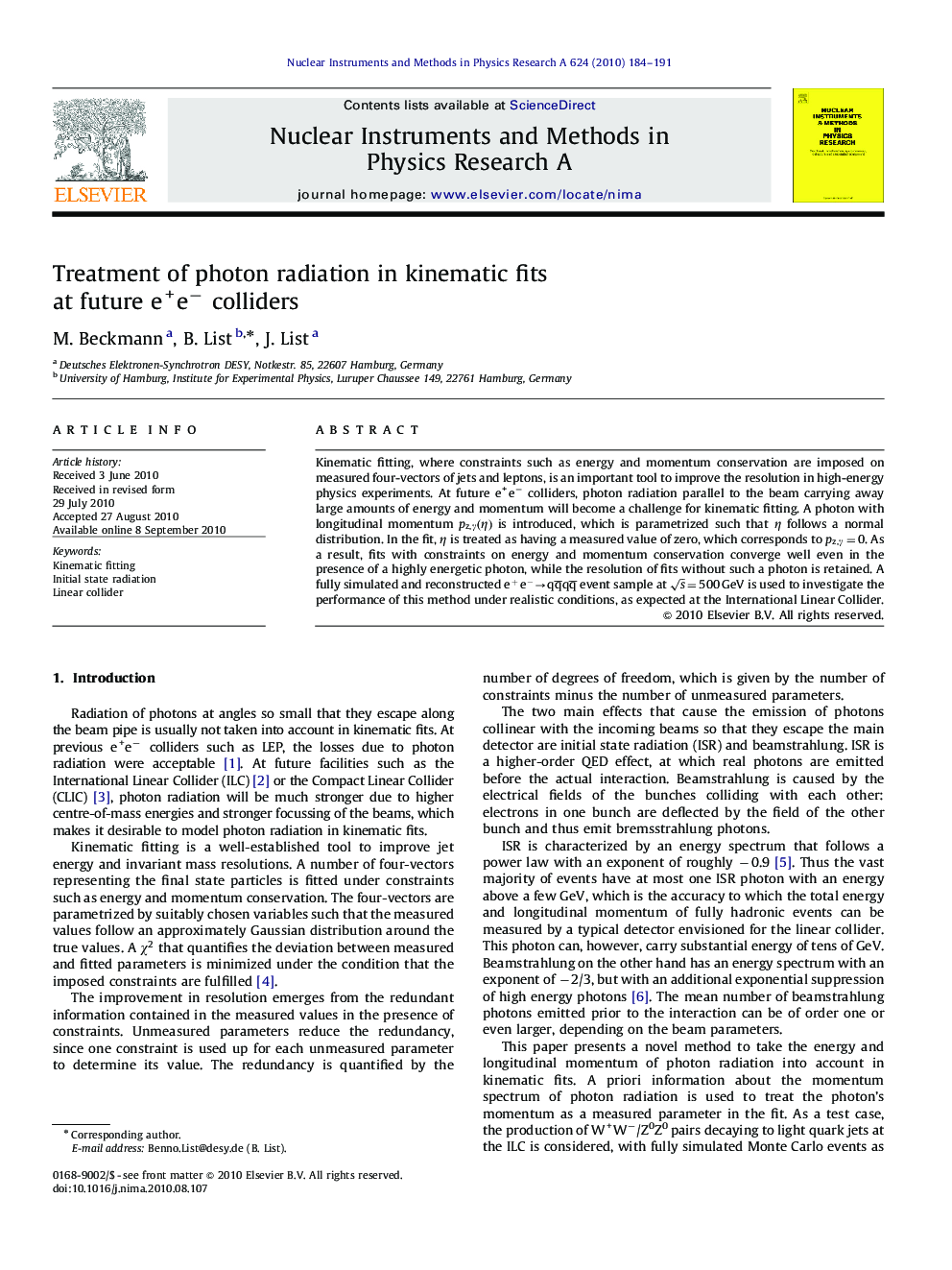| کد مقاله | کد نشریه | سال انتشار | مقاله انگلیسی | نسخه تمام متن |
|---|---|---|---|---|
| 1825991 | 1027373 | 2010 | 8 صفحه PDF | دانلود رایگان |

Kinematic fitting, where constraints such as energy and momentum conservation are imposed on measured four-vectors of jets and leptons, is an important tool to improve the resolution in high-energy physics experiments. At future e+e− colliders, photon radiation parallel to the beam carrying away large amounts of energy and momentum will become a challenge for kinematic fitting. A photon with longitudinal momentum pz,γ(η)pz,γ(η) is introduced, which is parametrized such that ηη follows a normal distribution. In the fit, ηη is treated as having a measured value of zero, which corresponds to pz,γ=0pz,γ=0. As a result, fits with constraints on energy and momentum conservation converge well even in the presence of a highly energetic photon, while the resolution of fits without such a photon is retained. A fully simulated and reconstructed e+e−→qq¯qq¯ event sample at s=500GeV is used to investigate the performance of this method under realistic conditions, as expected at the International Linear Collider.
Journal: Nuclear Instruments and Methods in Physics Research Section A: Accelerators, Spectrometers, Detectors and Associated Equipment - Volume 624, Issue 1, 1 December 2010, Pages 184–191